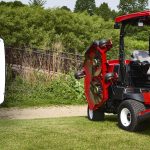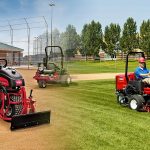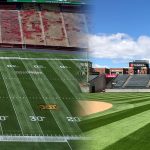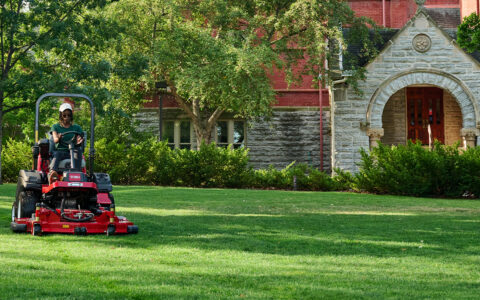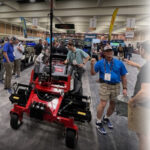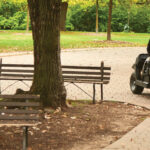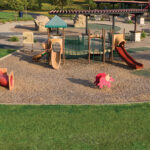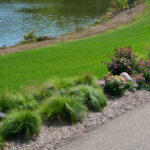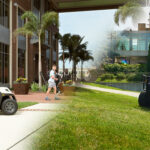The University of Notre Dame ®
Sports turf managers maintain dozens of varsity practice and game fields at Notre Dame, but none are more visible as the football field in Notre Dame Stadium. More than 80,000 spectators pack the stadium on autumn Saturdays — and nearly every home game is nationally televised — so healthy green turf is a must.

The Details
Situated in northern Indiana, Notre Dame is a cool season grass campus. The football stadium and other athletic fields consist primarily of Kentucky bluegrass and perennial ryegrass. The height of cut varies depending on the field and the time of year, but is generally around 2”.
Facility Highlights
• Notre Dame employees cultivate and maintain 30 acres of practice and game fields
• Notre Dame Stadium seats 80,795 spectators
• The first football game at the stadium was played in 1930
• Since 1973, every game has been sold out

The Equipment
While there is no doubt that reel mowers give the highest quality of cut (because of the scissor action of the reel and bed knife), even the finicky sports fields managers at ND feel the Toro Groundsmaster ® 3500-D and 4500-D rotaries provide the quality of cut a venue of this level requires. These products also do a great job of providing the turf striping that people around the world expect when they watch Notre Dame’s home games.
Turf managers say the stadium’s sand-based soil is a treat to work with, but it must be cared for attentively. In order to prevent an organic layer from forming above the sand-based soil, Notre Dame uses the Toro ® Pro Sweep ® to collect pulled cores. Preserving the soil’s makeup, they say, is easier than trying to amend it later.
Practices & Results
Notre Dame’s efforts are familiar ones: aeration, irrigation and pest control as necessary. Though Notre Dame Stadium houses one of the most famous American athletic programs, it shares the same issues with sports fields across the nation. The biggest problem, according to the turf manager, is Poa annua, a weed commonly battled throughout the Midwest. The field takes abuse, and returning it to perfect shape is always the top priority of the off-season.
Notre Dame places a strong emphasis on the environment, so fields are kept up differently depending on their use. Game fields are preventively maintained with a schedule of application practices to prevent problems before they start. Practice fields are handled on an environmentally conscious, problem-by-problem basis and spot-treated whenever practical. This helps minimize the amount of chemicals used while still maintaining high-quality fields.
The Bottom Line
Employees say the legacy of Notre Dame Football doesn’t increase the pressure. It’s a simple goal: Do high-quality work and pay close attention to detail.
To learn more about the Toro Groundsmaster 3500-D and 4500-D rotary mowers, click here. To check out the Pro Sweep, visit this page.

